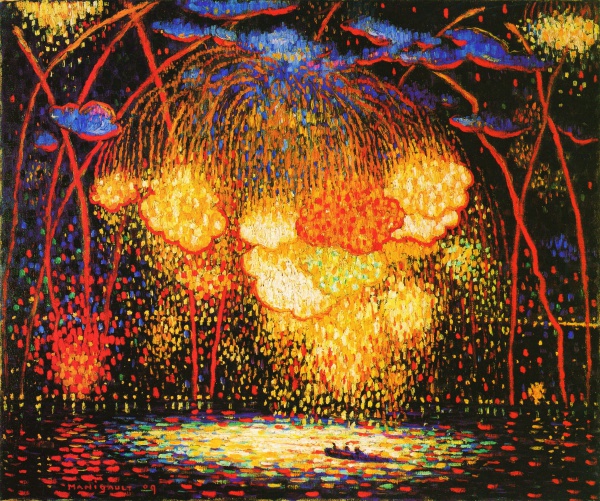Facts About The Rocket
"The Rocket" is a vibrant painting by Edward Middleton Manigault that captures a fireworks display over the Hudson River in the fall of 1909. Manigault, an innovative artist from London, Ontario, employs a bold color palette reminiscent of Fauvism to bring this scene to life. The painting depicts a boat filled with spectators enjoying the fireworks, encircled by a radiant glow that beautifully reflects on the water.
Manigault is celebrated as an early figure in the Modernist movement in both Canada and America. "The Rocket" likely draws inspiration from the fireworks displays along the Hudson River in 1909, honoring significant historical events such as Henry Hudson’s discovery of the river in 1609 and the launch of Robert Fulton’s steamboat, Clermont, in 1807.
The painting showcases Manigault’s distinctive style, featuring brilliant patches of golden, red, and orange hues that burst across the canvas, mimicking the fireworks’ spectacle. The Hudson River acts as a mirror, reflecting the dazzling display overhead. Manigault’s technique is rooted in post-impressionism, influenced by artists such as Van Gogh, Gauguin, Seurat, and Signac. Van Gogh and Gauguin were known for their bold, vibrant colors, while Seurat's pointillism meticulously created images using tiny colored dots.
In "The Rocket" Manigault combines these influences to create a dynamic and captivating scene, celebrating both artistic innovation and historical milestones.

 Canada
Canada